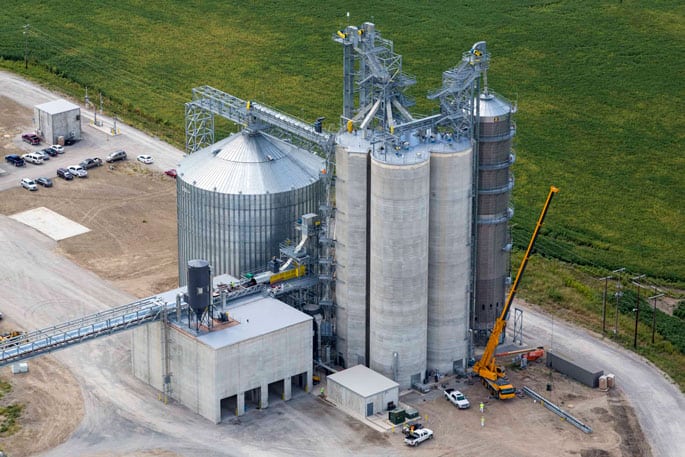Grain Dust Collection
Grain dust collection is a major issue in the grain and seed industry. Grain dust fires and explosions are so common that OSHA has its own combustible dust rule just for agricultural dust. Failures in grain dust control lead to injuries and deaths.
The size and texture of grain and seed dust varies. The material may be abrasive, sticky, or fine. Also, a grain processing facility uses many different machines and processes. OSHA and NFPA standards regulate the need for dust control throughout grain and seed facilities.
Grain and seed processes that create problem dust may include:
- Conveyors and other transports
- Bucket elevators
- Transfer points
- Hammer mills
- Bin vents
- Silos
- Blenders and mixers
- Truck loading and unloading
Both CMAXX cartridge dust collectors and BRF baghouses function well for grain dust control. A CMAXX spot collector’s small size allows it to be placed in locations hard to reach with a traditional dust collection system. The grain and seed industries traditionally use baghouses for dust collection. However, cartridge collectors are increasing in popularity.
Recommended Equipment
Possible Equipment
- Cyclone
- Chemical isolation system
- Spark trap
- Rhino Drum
- Abort Gate
- Explosion Venting
- Explosion Isolation Valve
- Airlock
Grain dust is extremely combustible. Fire and explosion risk pose a serious hazard in all grain-handling applications. Dust control prevents accidents that can cause injuries, facility damage, and deaths. Fires in grain processing facilities often cause major damage to structures and equipment.
An effective grain dust collection system should be considered necessary for all grain and seed processing. Safety standards require all systems to be protected against fire and explosion hazards. Avoid cost-cutting and invest in a properly designed system.
